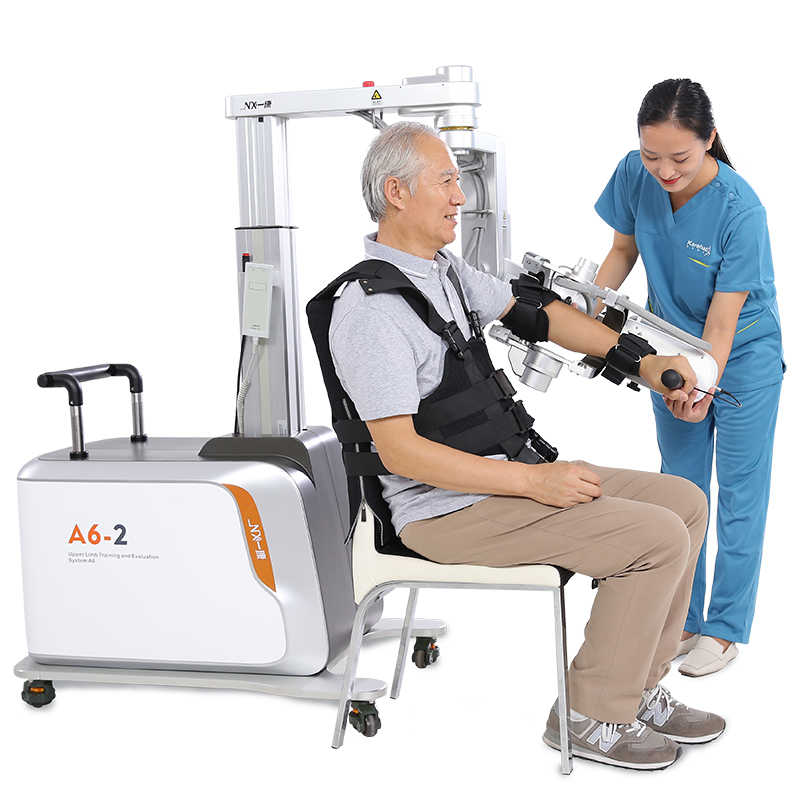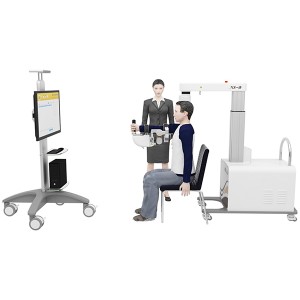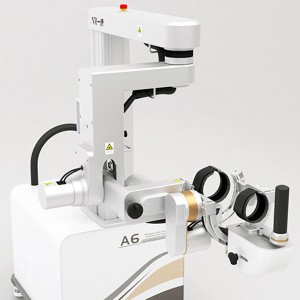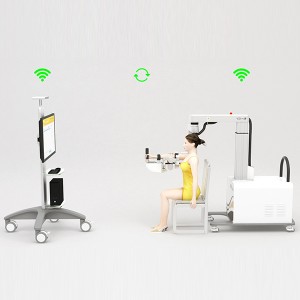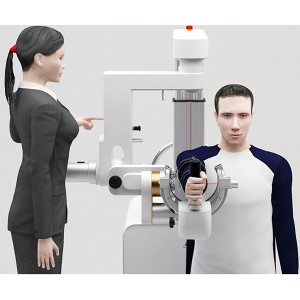Arm Rehabilitation and Assessment Robotics
The arm rehabilitation and assessment robotics can simulate the arm movement in real time according to computer technology and rehabilitation medicine theory. It can realize the passive movement and active movement of arms in multiple dimensions. Moreover, integrated with situational interaction, feedback training and a powerful evaluation system, A6 enables patients to train under zero muscle strength. The rehab robot helps to train patients passively in the early period of rehabilitation, thus shortening rehab process.
What Is The Arm Rehabilitation Robotics For?
The robot is suitable for patients with arm dysfunction or limited function due to central nervous system diseases. Of course, A6 is also a great solution to dysfunction from peripheral nerve, spinal cord, muscle or bone diseases. The robot supports specific training that increases muscle strength and expand the range of joint motion to improve motor function. In addition, it can also assist therapists in assessment to make better rehabilitation plans.
Indication:
Arm dysfunction caused by nervous system damage such as stroke, brain injury, spinal cord injury, and neuropathy, arm movement disorder after surgery.
What Is Special with The Arm Rehabilitation Robotics?
There are five training modes: passive mode, active and passive mode, active mode, prescription mode and trajectory training mode; each mode has corresponding games for training.
1,Passive mode
Suitable for patients in the early period of rehabilitation, and therapists can set 3 minutes training simulating the movement of the daily activities. The trajectory training makes patients to do repeated, continuous and stable arm training. Of course, therapists could set training trajectory accordingly.
2, Active and passive mode
The system can adjust the guiding force of the exoskeleton to each joint of the patient arm. Patients can use their own strength to complete training and stimulate their rehabilitation of residual muscle strength.
3, Active mode
The patient can drive the robotic exoskeleton to move in any direction. Therapists can select corresponding interactive games accordingly and start to do single joint or multi-joint training. Active mode helps to improve the initiative of the patient training and speed up the rehabilitation process.
4, Prescription mode
The prescription mode is more inclined to the training of daily living abilities. Therapists can select corresponding training prescriptions, so that patients can quickly train and improve their daily life ability.
5, Trajectory training mode
Therapist can add motion trajectories that patients want to complete. In the trajectory editing interface, parameters such as joints and joint movement angles to be trained are added in the order of execution. Patients can get trajectory training and the training methods are diversified.
What Else Can The Arm Rehabilitation Robotics Do?
Data view
User: Patient login, registration, basic information search, modification, and deletion.
Assessment: Assessment on ROM, data archiving and viewing as well as printing, and preset running trajectory and speed recording.
Report: View patient training information history records.
Established in 2000, we are a reliable rehabilitation equipment manufacturer that you can trust. Find rehabilitation robotics or physical therapy equipment that is useful to you, and don't forget to contact us for a favorable price.







